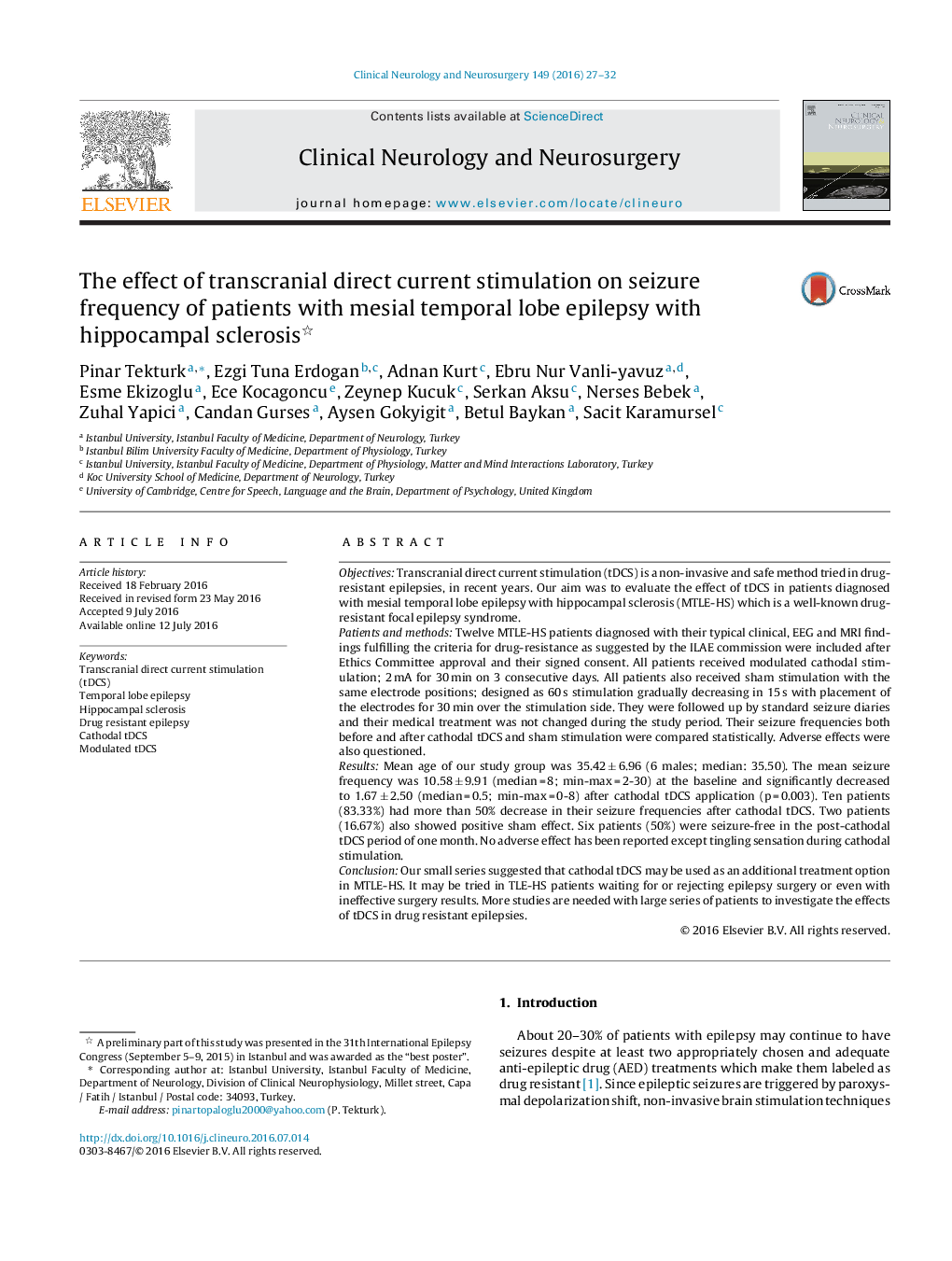| کد مقاله | کد نشریه | سال انتشار | مقاله انگلیسی | نسخه تمام متن |
|---|---|---|---|---|
| 3039456 | 1579673 | 2016 | 6 صفحه PDF | دانلود رایگان |
• Cathodal tDCS showed significant decline in monthly seizures of MTLE-HS patients.
• All patients tolerated tDCS well without safety problems.
• Optimal stimulation parameters are not yet clarified for tDCS.
• Cathodal tDCS may be used as an additional treatment option in MTLE-HS patients.
ObjectivesTranscranial direct current stimulation (tDCS) is a non-invasive and safe method tried in drug-resistant epilepsies, in recent years. Our aim was to evaluate the effect of tDCS in patients diagnosed with mesial temporal lobe epilepsy with hippocampal sclerosis (MTLE-HS) which is a well-known drug-resistant focal epilepsy syndrome.Patients and methodsTwelve MTLE-HS patients diagnosed with their typical clinical, EEG and MRI findings fulfilling the criteria for drug-resistance as suggested by the ILAE commission were included after Ethics Committee approval and their signed consent. All patients received modulated cathodal stimulation; 2 mA for 30 min on 3 consecutive days. All patients also received sham stimulation with the same electrode positions; designed as 60 s stimulation gradually decreasing in 15 s with placement of the electrodes for 30 min over the stimulation side. They were followed up by standard seizure diaries and their medical treatment was not changed during the study period. Their seizure frequencies both before and after cathodal tDCS and sham stimulation were compared statistically. Adverse effects were also questioned.ResultsMean age of our study group was 35.42 ± 6.96 (6 males; median: 35.50). The mean seizure frequency was 10.58 ± 9.91 (median = 8; min-max = 2-30) at the baseline and significantly decreased to 1.67 ± 2.50 (median = 0.5; min-max = 0-8) after cathodal tDCS application (p = 0.003). Ten patients (83.33%) had more than 50% decrease in their seizure frequencies after cathodal tDCS. Two patients (16.67%) also showed positive sham effect. Six patients (50%) were seizure-free in the post-cathodal tDCS period of one month. No adverse effect has been reported except tingling sensation during cathodal stimulation.ConclusionOur small series suggested that cathodal tDCS may be used as an additional treatment option in MTLE-HS. It may be tried in TLE-HS patients waiting for or rejecting epilepsy surgery or even with ineffective surgery results. More studies are needed with large series of patients to investigate the effects of tDCS in drug resistant epilepsies.
Journal: Clinical Neurology and Neurosurgery - Volume 149, October 2016, Pages 27–32
